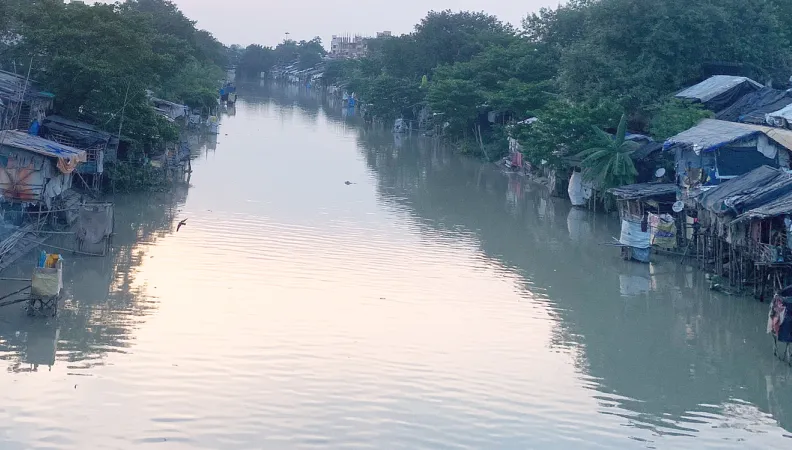Share the page
AFD-EU Research Facility on Inequality: Reviewing the Results
Published on

Financed by the EU and carried out by AFD, the Research Facility on Inequalities features 22 research projects involving more than 60 researchers in Africa, Asia, Latin America, Europe and the US. It is designed to shed more light on socio-economic inequalities in developing and emerging economies, and help design the public policies necessary to reduce them. These projects were conducted jointly with research centers around the world, in coordination with partner governments and development institutions.
We speak to two experts about the results of three years of research, which have just come to a close.
Hélène Djoufelkit is AFD’s Director of the Economic Analysis and Public Policy Department.
Gabriella Fesus is responsible for Social Inclusion and Protection, Health and Demography at the European Commission’s Directorate General for International Partnerships.
What prompted the EU to launch the Research Facility on Inequalities?
Gabriella Fesus
Reducing inequalities in our partner countries is a fundamental priority for the European Commission, and we are aware that it is a multi-dimensional phenomenon with multiple dynamics and drivers. Unfortunately, its levels have been rising, both between and within countries. Now we have an opportunity to use the results of this research to better target our actions, address inequalities, and find ways to measure the impact of what we do. We are also better equipped to support our partner countries to design evidence-based policies to address inequalities.
Hélène Djoufelkit
What was important for both AFD and the EU is this research program had to be undertaken by local researchers. We sought local universities and researchers to liaise with local authorities, to examine trends in inequalities and seek policy recommendations. On top of providing data and results, the Facility has created many spaces of dialogue on inequality issues in more than 30 countries.
What have researchers found so far?
HD
In some countries, like Cameroon and Ghana, inequality has increased. In others, like Côte d’Ivoire and Kenya, it has decreased since 2000 and remained stable in South Africa.
We have also found that all kinds of inequality are interlinked. We cannot separate health or education inequality, for example, from income or revenue inequality. It’s multidimensional. Even when we provide support for health and education, gender inequality has proven resistant to many reforms.
Gender inequality is driven by the prevalence of the informal sector, where women are overrepresented. This is due to the structural organization of the society, such that even with improvements in overall revenue, gender inequalities remain a huge challenge. As women have less access to higher education and formal jobs, improvements here will tend to decrease gender inequality.
GF
Among the aspects of inequality, what comes to the fore are the ramifications of globalization, technological change, unemployment and access to finance. Low access to finance can deprive families of sources of income other than work, which in developing countries often entails low earnings. Unemployment levels and GDP growth can also affect income inequality. High unemployment can lead to higher inequality, and pressure on wages can in turn have a negative effect on trade union membership and on workers’ bargaining power.
HD
The Facility has proven that one of the main drivers of inequality is access to education and the labor market, but also to decent living standards such as clean water and sanitation, housing, and basic infrastructure such as transportation.
Human capital is also important. In Tunisia, the project undertook an historical and social analysis of inequality – the first time such an approach had been used. The study showed that the standard of living is higher where inherited human capital is higher. Inherited human capital reflects the skills and knowhow transmitted by previous generations. It is measured by an index summarizing the grandparents’ level of education, their level of competence, and the complexity of their profession.
Find Out More: A Research Facility to better understand inequalities
GF
Many of the drivers of inequalities are coming to light in the Covid-19 crisis: insufficient access to health and social assistance has shown the impact these crises can have. So we need more resilience to these shocks. The crisis has exacerbated inequality and reversed a number of the gains we have made.
HD
While the spectrum of policies that impact inequality is extremely large, from monetary to trade policy, the Facility’s research projects focused mostly on social and fiscal policies, which have a direct effect on income distribution. The Facility uses a “fiscal incidence tool” to assess the overall economic impact of government taxation and social spending systems in Kenya, Morocco and South Africa.
What kinds of solutions are on the horizon?
GF
We need to capitalize on the tools developed by the Research Facility. With these diagnostic tools we are able to better understand the bottom 40 percent of the income distribution, and to target it in a way that was not previously possible. The Bottom 40 needs to be our primary focus in an effort to speed up the reduction of inequalities, and to achieve Sustainable Development Goal # 10.1.
Furthermore, the current Covid-19 crisis is a systemic threat to our world, but it is being turned into an opportunity for innovative approaches. The Team Europe Approach was born as a unified response to the pandemic, but it is being used to jointly tackle inequalities in partner countries.
Team Europe gives us the opportunity to nurture a strategic culture of cooperation around transformative actions that can have real impact. Initiatives are in development to support partner countries to ensure they will have a just, sustainable and inclusive recovery, but also that they will be able to address those inequality dynamics that were there before the crisis.
What kinds of policy proposals has the research culminated in?
HD
When you see charts of inequality in different parts of the world, you see “Africa…No Data”. The Facility has helped improve the provision of data and has documented public policy impact on inequality. It has also developed an inequality diagnostic handbook, which aims to help national statistical institutes measure inequalities through a standardized methodology.
We will push for the research findings to be translated into meaningful policy reforms. Special attention will also be paid to the impact of low carbon transitions policies on inequalities in the context of just transitions.
Tell us more about how the EU and AFD cooperated in this research initiative.
GF
We have had excellent cooperation. AFD has the expertise and the political will to tackle inequality. This can help us create synergies with other donors to help us achieve the 2030 agenda.
HD
We are honored the EU trusted AFD to join this program. It provided a grant of €4.5 million in the 1st phase, for 22 research projects. Now, they have provided another €3 million to focus on four countries: Mexico, Colombia, South Africa and Indonesia. We will now be able to dig in and focus on diagnostics and policy recommendations, and push synergies with other donors.
